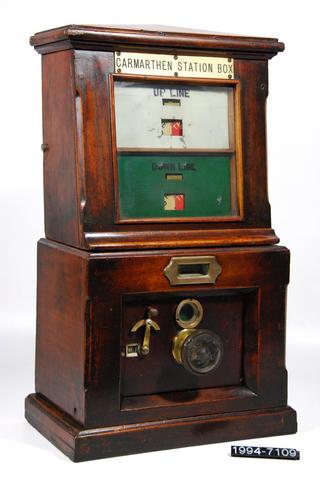
32 Lever Signal Lever Frame
- Made:
- 1869 in United Kingdom
- maker:
- Saxby & Farmer Limited

Signal lever frame, 32 levers, direct spindle locking, ex Rillington Junction Box, North Eastern Railway, by Saxby & Farmer, 1869.)(But see 2003-8481)
Control on the railways has been a requirement since the earliest days and has been continually refined. A major breakthrough was the interlocking of signals and points to ensure that trains were not sent on routes that they were not intended to. As technology developed, patents on different developments and aspects of technology were lodged by manufacturers and innovators to protect their specific improvements. In 1859, Saxby & Farmer patented the direct spindle locking frame - but after use, further developments saw this superceded by rocker and then tappet locking frames, each of which made the frames more secure but also able to withstand operation and wear better. The rapid change of signalling technology means that this direct spindle locking frame from Rillington Junction is a rare and signficant survivor from the period of develoing train control.
Details
- Category:
- Signalling & Telecommunications
- Object Number:
- 2002-8481
- Materials:
- metal (unknown), rubber (unidentified) and paint
- Measurements:
-
: 73.622 x 199.6063 x 92.9134 in.; 1870 x 5070 x 2360 mm
- type:
- signal lever frame
- credit:
- British Rail




